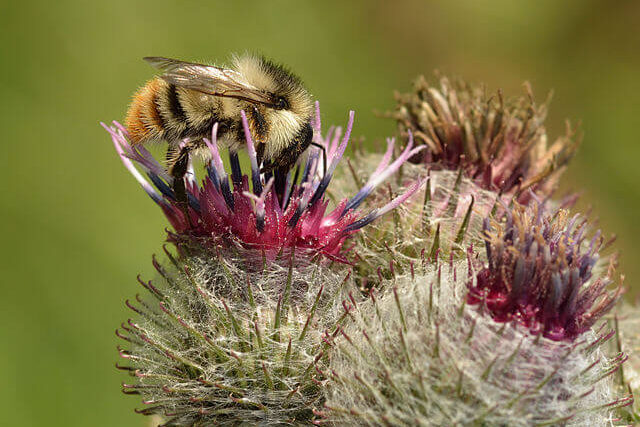
Conservationists in Kent report encouraging signs that rare bumblebees are making a comeback, thanks to efforts to improve their habitats.
For the second consecutive year, the Bumblebee Conservation Trust has recorded sightings of one of Britain’s rarest bees, the shrill carder, in an area in the south-east of the county where it had not been seen for more than a decade.
Dr Nikki Gammans from the trust said: “By creating more of the habitat that they like, the flower rich habitat, we can hopefully see some more.”
She added that she believed the trust’s habitat advice had been “key” to supporting this species, as well as other rare ones.
The trust provides guidance to landowners and local authorities on how to enhance conditions for bumblebees, which depend on nectar and pollen for survival and therefore require flowers from early spring through to late autumn.
Jaqui Bamford, who lives on Romney Marsh, has followed this advice and has been rewarded with shrill carder bees visiting her garden.
She has transformed a five-acre field into a wildflower meadow with ponds and a garden designed for pollinators.
She said: “It was pretty much a barren area but now it’s gorgeous because there are lots and lots of different perennials. It’s just been a complete transformation.”
Dr Gammans added: “We really do need to do something to help our bumblebees because many of them are in decline and some are really facing extinction.
“We have to act now to help them and the best way to do that is to get involved, plant more flowers for them and help us go out and record and see what else is out there.”
This development follows a joint declaration by Britain’s leading conservation charities, calling for widespread restoration of flower-rich habitats, reductions in pesticide and pollutant use, and stronger legal protections for key insect species and their habitats.
Despite favourable conditions for insects this year, both Butterfly Conservation and the Bumblebee Conservation Trust report that numbers have only returned to average levels after last year’s record lows.
Gill Perkins, Bumblebee Conservation Trust’s chief executive officer, said: “Our precious insect populations are in trouble, and with them, so are we.”
Findings from the national bumblebee monitoring scheme revealed that 2024 was the worst year for bumblebees since records began.
Similarly, results from Butterfly Conservation’s Big Butterfly Count this year showed that butterfly sightings were only at average levels, despite near-perfect weather conditions for the insects.
Meanwhile, data from last year’s Bugs Matter survey, run by Buglife and Kent Wildlife Trust, suggest the number of flying insects has declined by 63% since 2021.
——————————————————————————
At Natural World Fund, we are passionate about restoring habitats in the UK to halt the decline in our wildlife.

